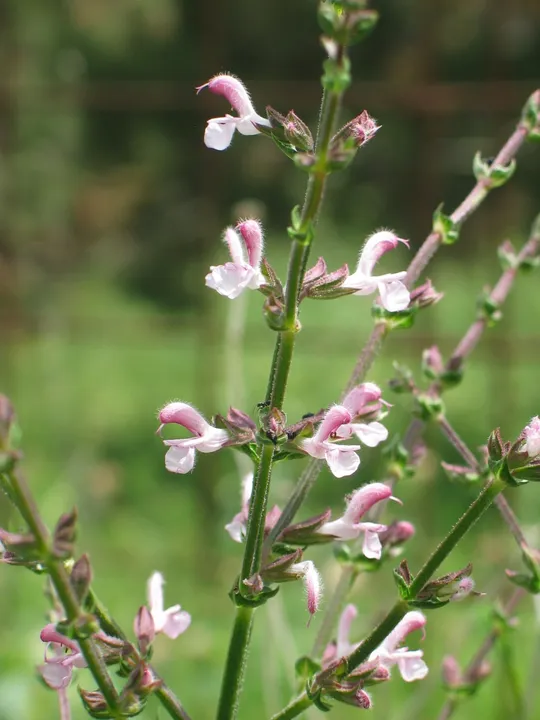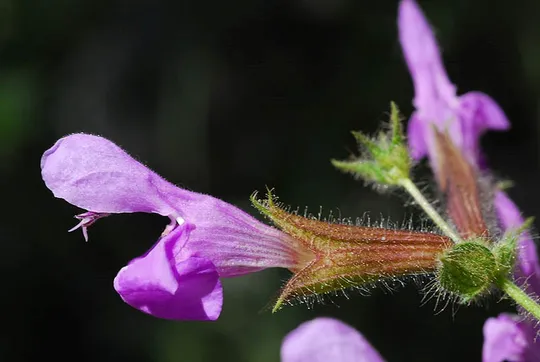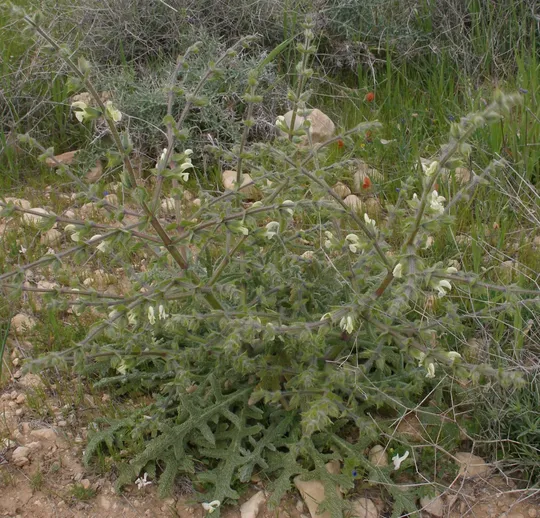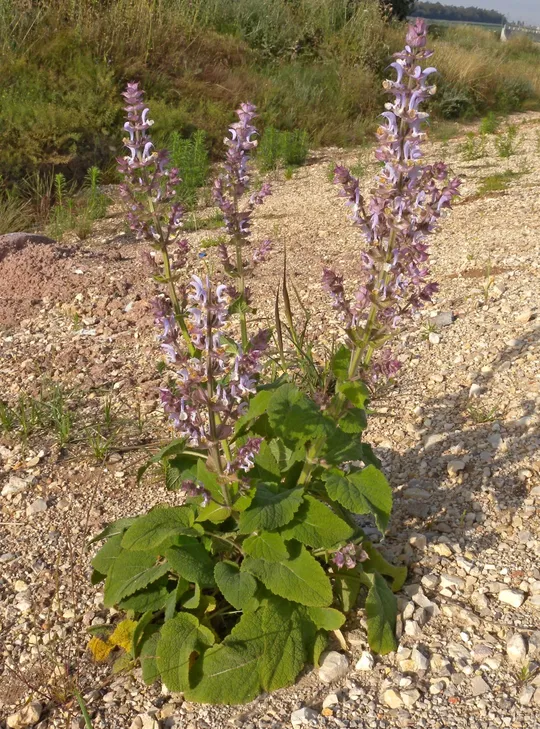Many-stemmed Sage
Salvia multicaulis
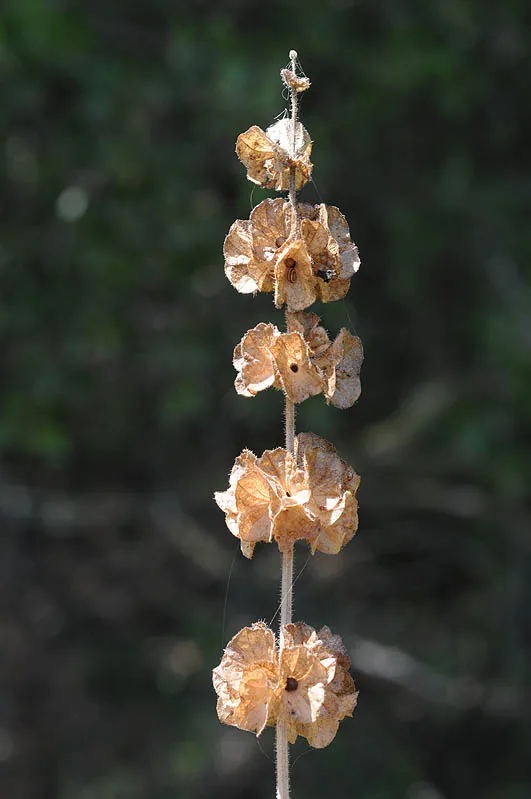
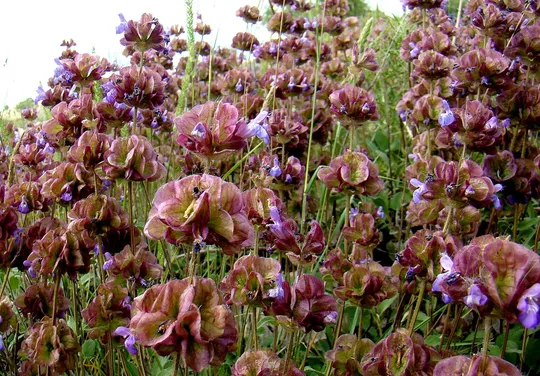
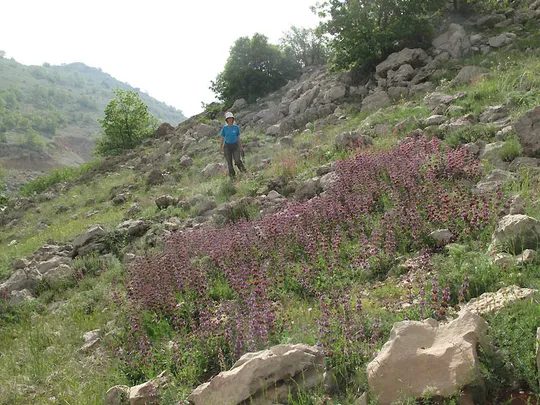
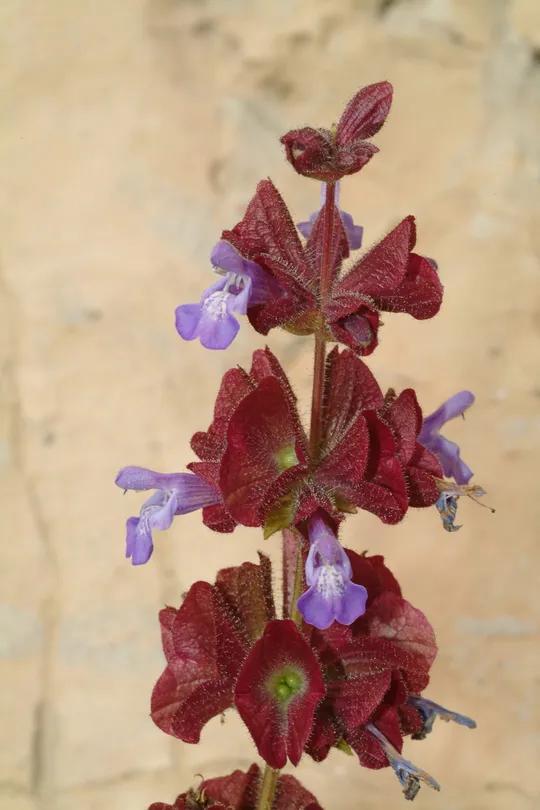
In the high mountain
area of Southern Sinai Salvia multicaulis is known for the smell of its leaves
and is called "mardakoosh"; the Bedouins prepare aromatic
"sachets" and medicinal tea with its leaves; the foliage is used as a
remedy for colds and phlegm.
Salvia multicaulis grows at one site in
the Judean Mountains: Hirbet Tura near Wadi Sorek, where Menahem Adar found three
plants in 1984 (Schmida and Adar, 1984). This population survived until the
late 1990s but in the early 2000s it was no longer found and was believed to be
extinct. The species was re-discovered at this site in 2010. At another site
near Motsa a single plant was found by Clara Chen and Mordechai Kislev in 1962
but has since disappeared. Additional populations grow in the montane forest
belt on the Hermon and in the Katrina block in Southern Sinai.
Salvia
maulticaulis grows in Sarcopoterium scrubland in open woodland, on limestone
slopes in the Quercus calliprinos and Pistacia lentiscus plant
association in the Jerusalem Mountains and on rocky limestone slopes in the transition
zone montane forest on the Hermon. It grows on diverse substrates – granite,
gabbro, sandstone and hard limestone rocks throughout the Levant.
Salvia
multicaulis belongs to the section Hymenosphace. The species in this section have a
large funnel-like calyx that is spread open like a large bell. Its center of distribution is in the high
mountains of eastern Turkey and in the northern Zagros Mountains. This is
typical tragacanth distribution characteristic of species groups
whose range is in the high mountains of the Middle East. Many of these species reach
the montane and tragacanth zones on the Hermon and about seventy taxa of this
group are also found on the high mountains of Southern Sinai. The relictual populations
found in the Judean Mountains, may testify to the fact that not far in the
geological past (some 12,000 to 20,000 years ago) the weather in our region was
cold and humid. In these conditions the tragacanth biota, migrated from the Lebanon
and Anti-Lebanon mountains southwards via the Samarian and Judean mountains,
and reached the peaks of the Negev Highlands, the Sinai Mountains, and possibly
Jabel Gelala in Egypt (Shmida, 1980).
·
Salvia multicaulis is very rare in
Israel – there is one know population in the Jerusalem Mountains, at a
protected site in the Jerusalem Mountains National Park. The small number of
plants (in 1993, 20 plants were counted), exposes the population to a
demographic threat and to extinction by random factors in the habitat. There is
no information on its reproductive biology or its ability to establish new
populations from seeds.
·
S. multicaulis is protected by
law.
·
The species in the broad sense of the
definition of its taxon is not globally endangered.
The Judean
Mountains region should be methodically surveyed once again to attempt to find
additional S. multicaulis populations. At the same time, plants
should be grown from seeds with a known genotype from botanical gardens, for
reintroduction, to create new populations and for genetic preservation of the
population. The sites on the Israeli Hermon should be protected
and fenced, as there are now only six patches of the species.
Salvia maulticaulis is found from the
Balkans, Crete, Turkey, the Levant, Persia, eastward to Iran and the mountains
of Afghanistan. It is common, but has a disjunct distribution in all the regions
of Transjordan and in Jabal al-Druze but is not found in the Golan. On Mount
Hermon it grows in fragmented concentrations at altitudes from 1600 to 2100
meters.
Salvia
multicaulis
is an extremely rare perennial grass with an attractive flower, which grows on
a single site in the Judean Mountains. It grows on Mt. Hermon and the Katrina
block in Southern Sinai. Its distribution pattern is characteristic of
mountainous areas in the Middle East and probably demonstrates a relictual
distribution pattern from the last Ice Age.
פרגוסון, ו., א.שמידע, ה.ווד, ומ.לבנה, 1974. "בין שלגי חרמון". הוצאת רשות שמורות הטבע, עמודים 144.
שמידע א. ואדר, מ. 1984 - "מחזיקת הגביע" על מציאת מרווה רחבת-גביע באזור ירושלים. "טבע וארץ", כ"ו:6 עמ' 31-32.
Current Occupancy Map
| 1000 squre meter pixel | 5000 squre meter pixel | 10000 squre meter pixel | |
|---|---|---|---|
| number of observations | 0 | 0 | 0 |
| in total pixels | 0 | 0 | 0 |
| Family | Lamiaceae |
| Classification | On the endangered species list |
| Ecosystem | Mountainous Semi Steppe forest and desert |
| Chorotype | Western Irano – Turanian (Eastern Mediterranean) |
| Conservation Site | Hirbet Tura in Judean Mountains |
| Rarity |
1
6
6
|
|---|---|
| Vulnerability |
0
3
4
|
| Attractiveness |
0
3
4
|
| Endemism |
0
0
4
|
| Red number |
1
6.3
10
|
| Peripherality | 0 |
| IUCN category | DD EW EX LC CR EN VU NT |
| Threat Definition according to the red book | Critically endangered |
 Based on:
Based on:
